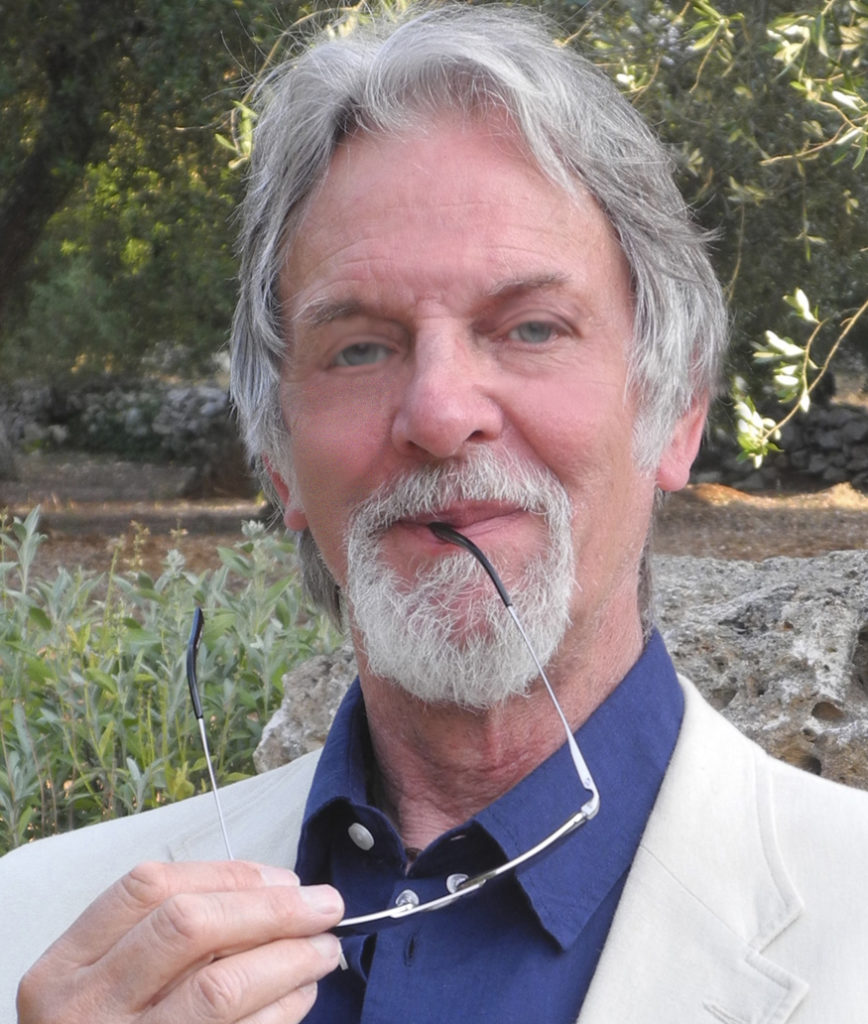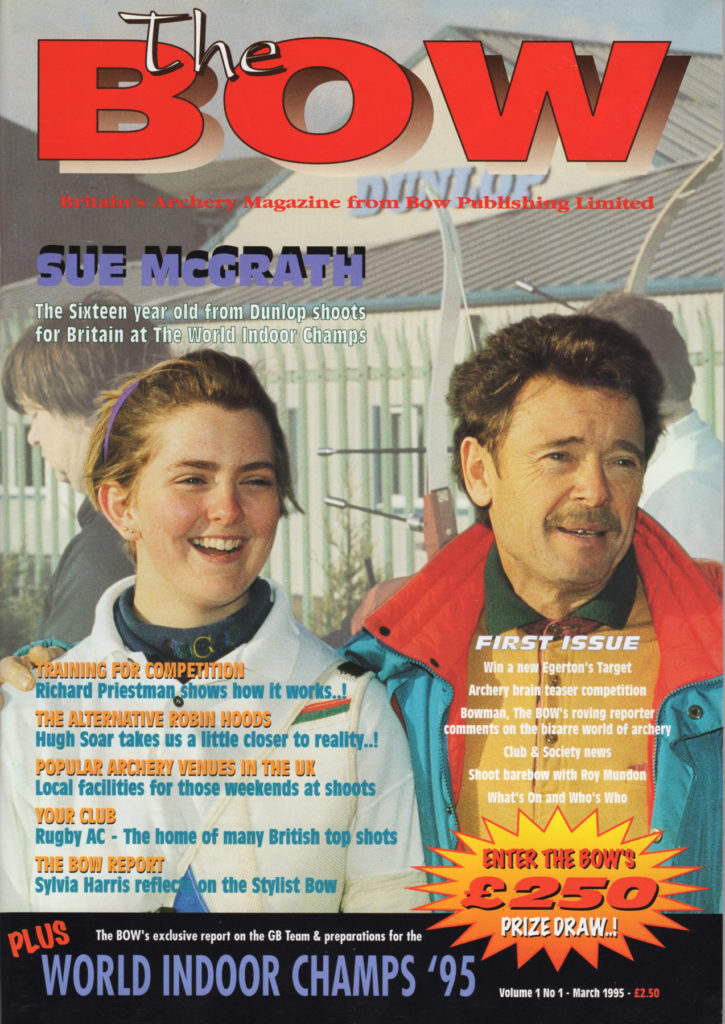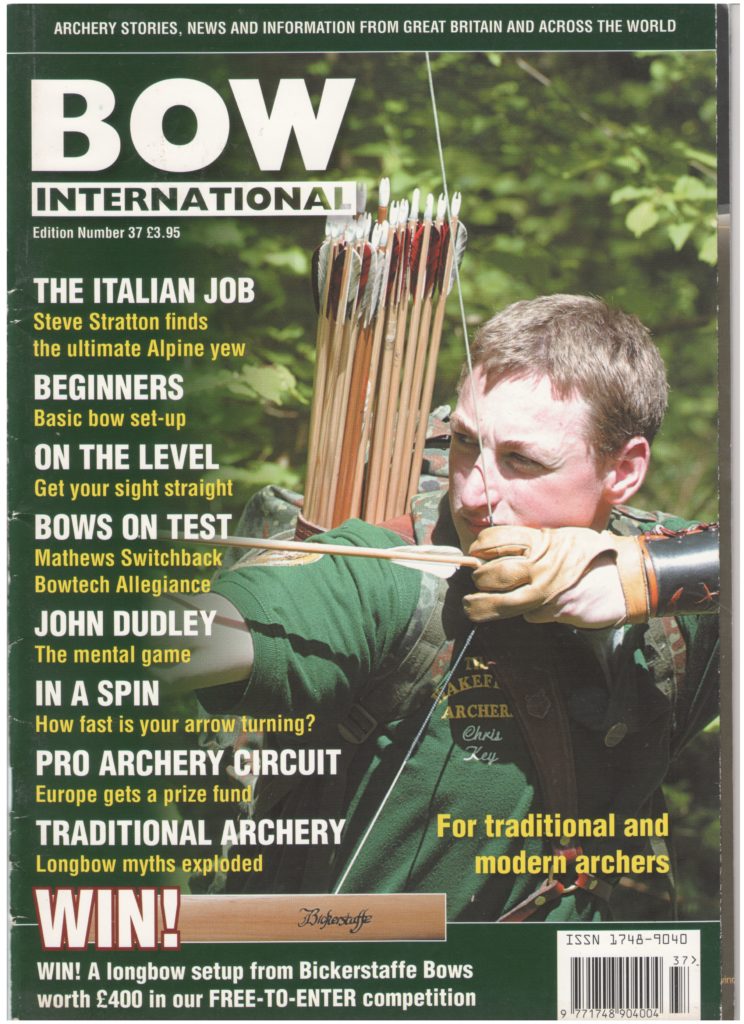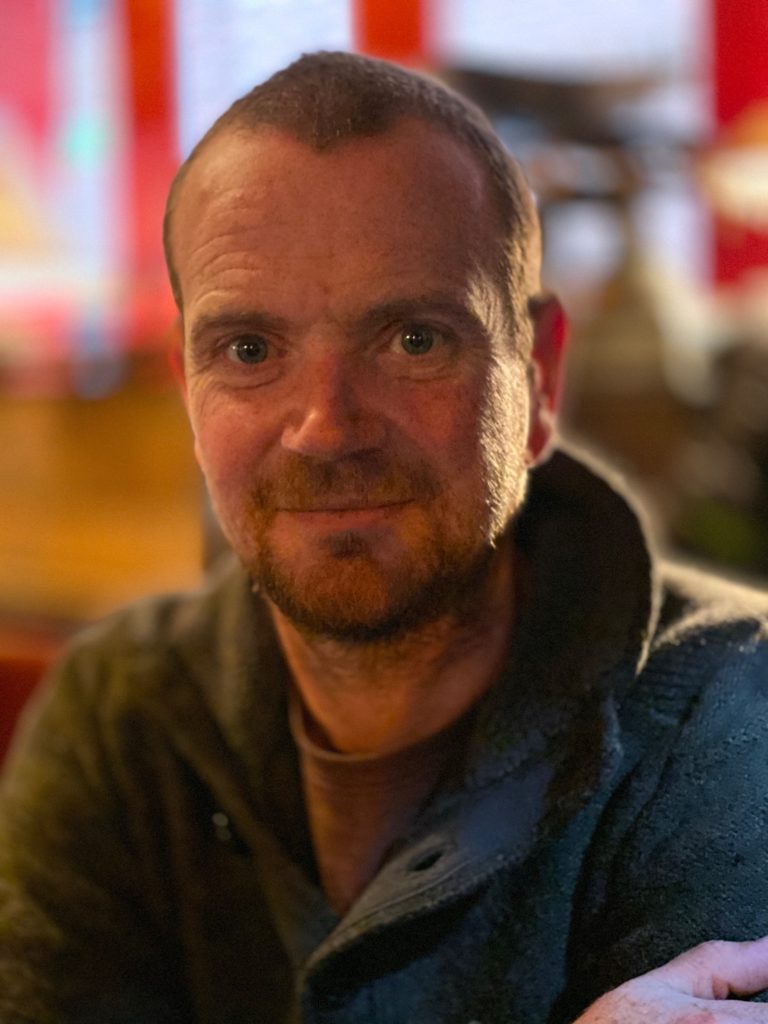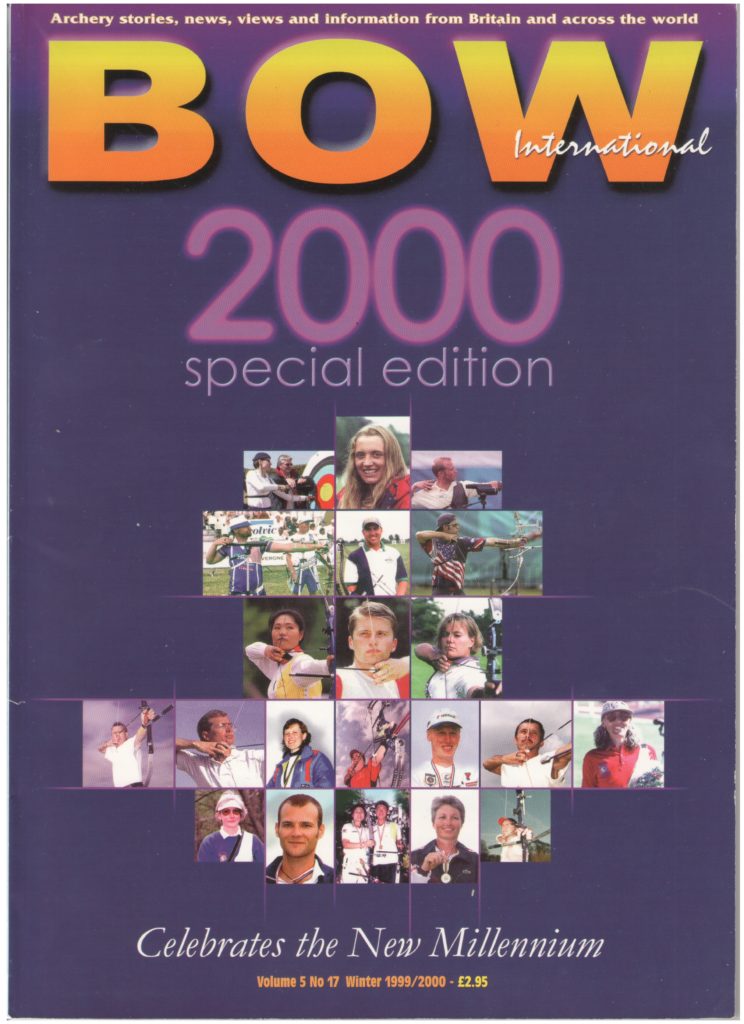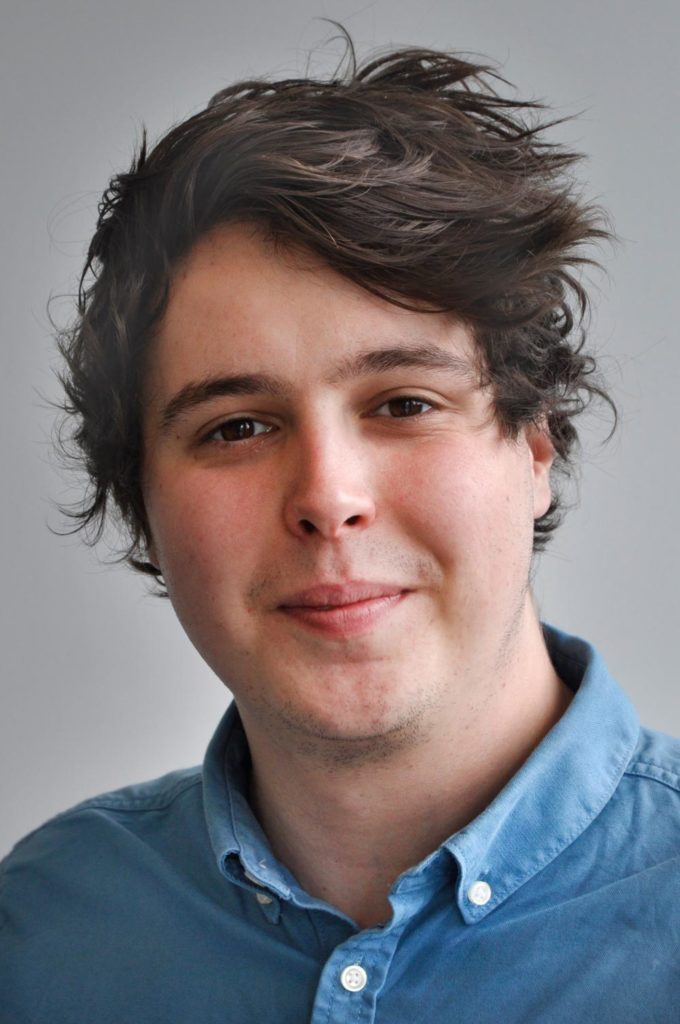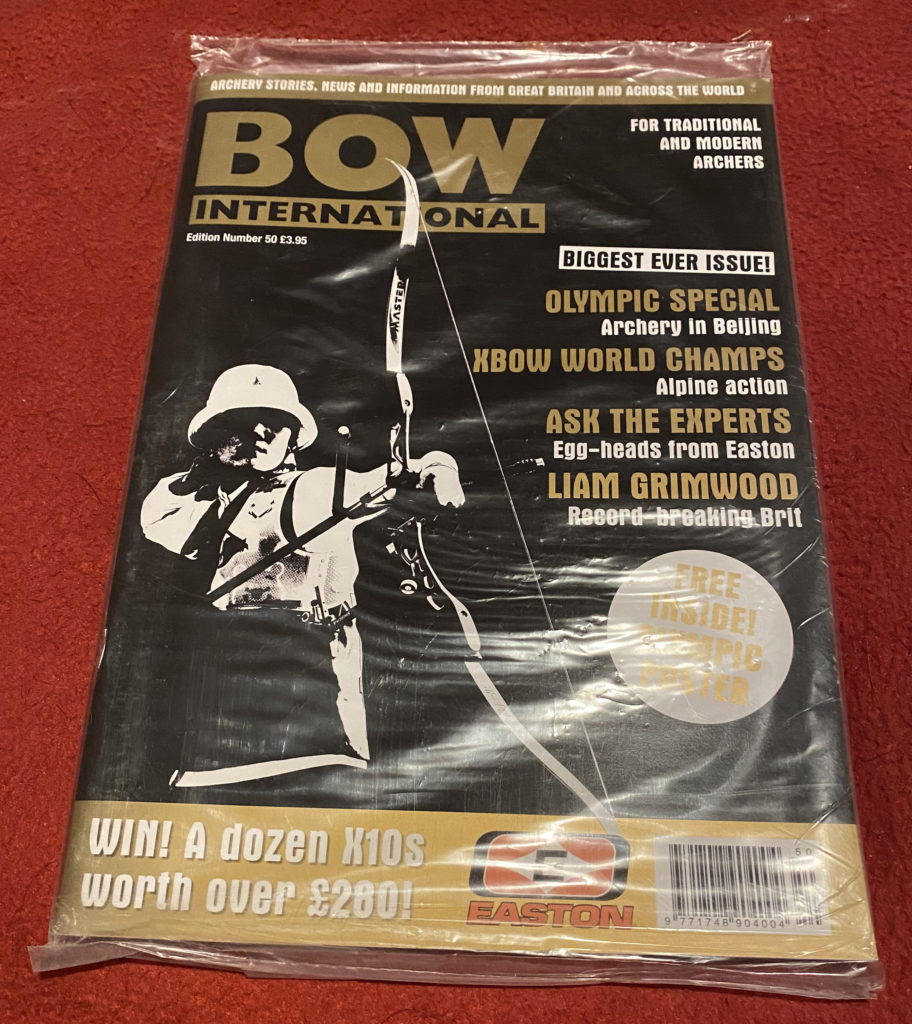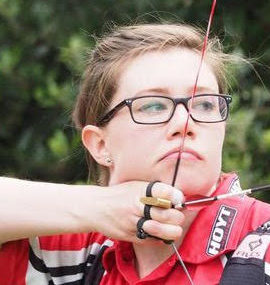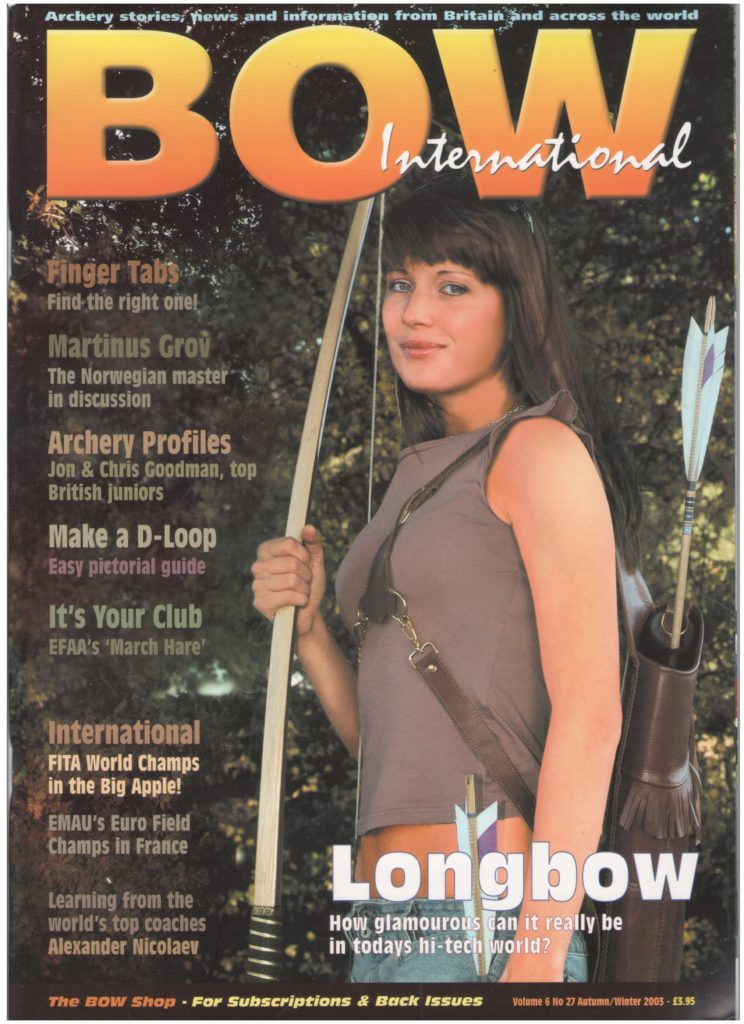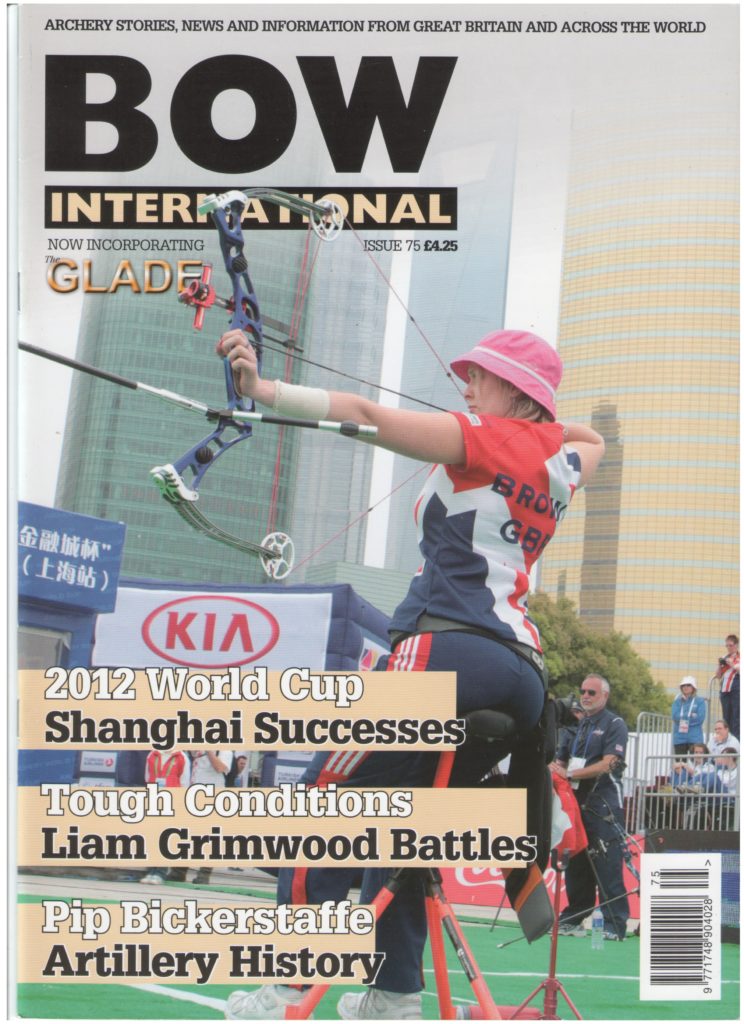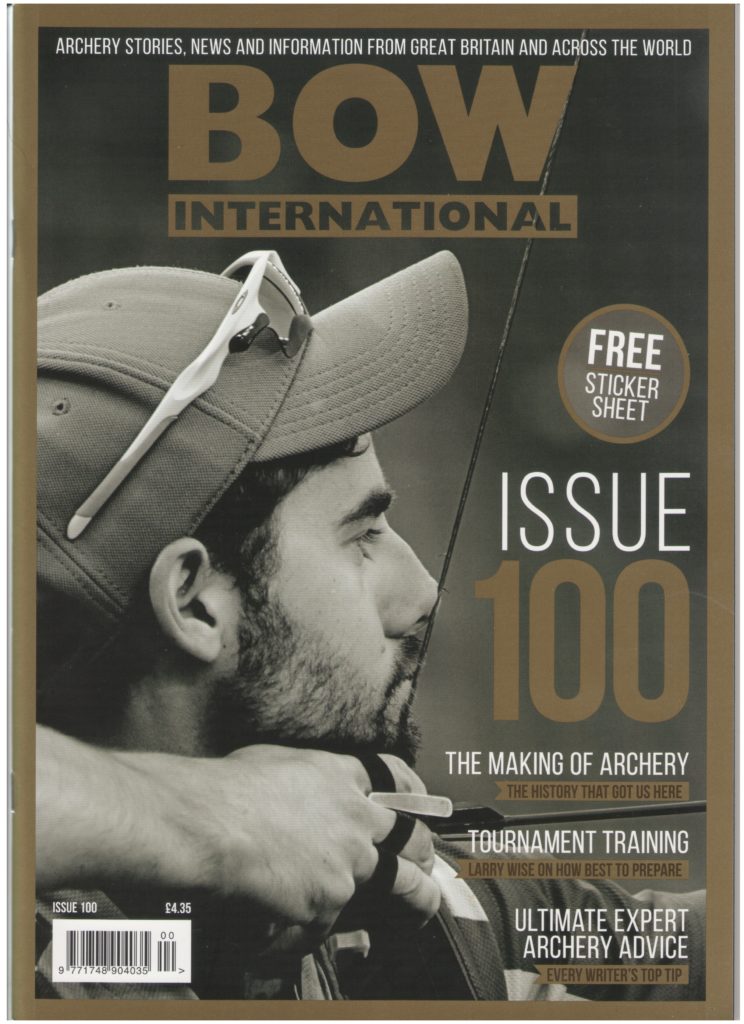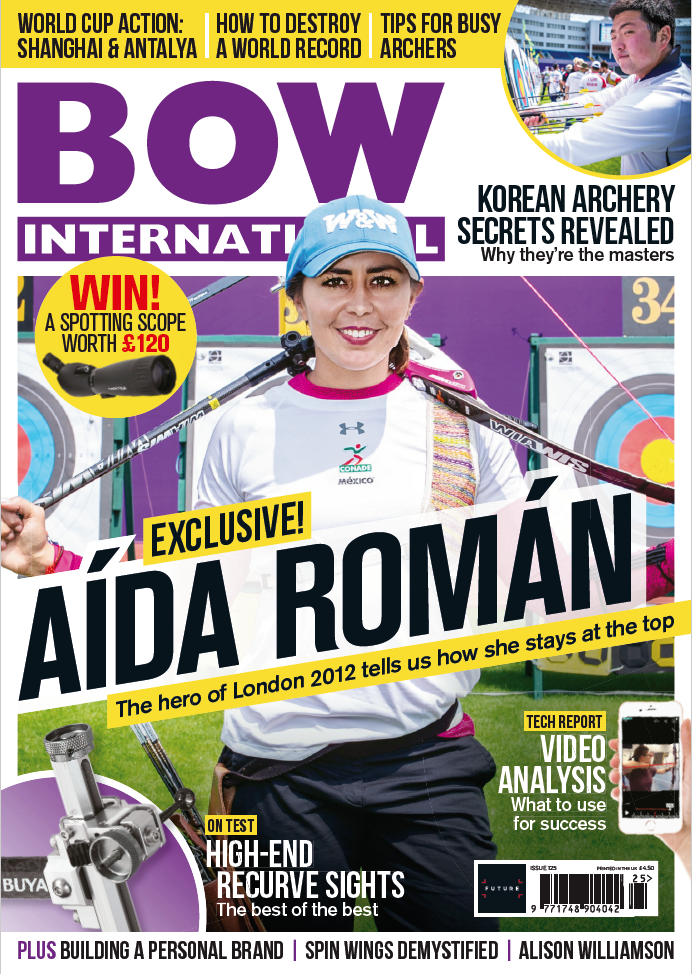The magazine founded in 1995 has hit yet another major milestone. Who made it happen?
Bow is 150! A magazine is formed by the publisher and the ad team, and the views of contributors and writers – but it is always shaped by the editor.
In Issue 137, Bow’s co-founder Richard White went deep into the backstory of Bow. You can find a lot more information there. When this anniversary was coming up, we speak to everyone who had been in the hot seat previously. Luckily, they all agreed…
Richard White
Co-founded Bow Magazine in 1995 with Daf White. Editor, 1995-2005
I was engaged as a freelance press and agency photographer in the 1970s and 1980s, when editors used anyone to bring back short stories from the field. Prior to Bow, for a short time I became the editor and publisher of News from the Centre at GNAS (the newsletter of what would become ArcheryGB). Bow was my way of trying to improve the image of archery with a contemporary looking, well-designed sports publication.
Several had attempted to do so before in the UK but most had faded into obscurity with the exception of one: Ted Bradford’s The Glade. Although popular amongst traditionalists, The Glade never really tried to promote the sport amongst the general public and mainly supported the UK archery market.
I saw an opportunity and asked a print outfit in Coventry and a marketing business to consider supporting me to reach people outside of archery and persuade them that playing with bows and arrows was worth trying.
In late 1994 I produced a ‘dummy’ magazine that became a template, used to persuade advertisers and my partners to see merit in the project. I took on the role of designer, editor, advertising manager and photographer whilst marketing and printing were taken care of by my partners, until they went their own way.
We set our sights on getting the publication into high street newsagents such as WH Smiths. But the beginning was a nightmare. There was the enormous pressure of producing an initial run (2,000) in less than six weeks with the idea of launching it free at the 1995 World Indoor Championships in Birmingham.
On top of writing features, design, printing costs, venue hire and time constraints, there was a lot of research and investigation into expected sales, subscriptions and advertising. Fortunately, we managed it in time and it was a huge success.
Unfortunately, the initial enthusiasm and a slower than expected subscription take-up was not enough to persuade my two partners to carry on. I was left with the task of publishing Bow on my own, but superbly supported by my wife, Daf White.
The work gave me a chance to visit clubs across the UK and interview archers at all levels. In addition, I was able to travel to Europe and the USA where most of the serious advertising came from.
It was a lot of hard work but it meant I could connect with the sport I loved. In early 1998, I decided to change the title to BOW International with the objective of reaching a readership across the globe.
It was a success mainly due to a new updated design, which persuaded many of the big archery manufacturers in the USA and Korea to promote heavily. The nightmare returned big time and, tragically, Daf succumbed to a long-term illness and died. Three years later, I sold Bow to Blaze Publishing in Leamington Spa.
I had many proud moments. Attending the 1999 World Outdoor Championships in Riom, France, where I was able to watch my son, Chris, win a bronze medal in the men’s team event. Being congratulated on the magazine by several of the world’s top archers and manufacturers at the ATA Archery Trade Show in Columbus, Ohio 2002. (I also received a rather nice bottle of Kentucky Bourbon that, sadly, did not last long).
I got to interview many wonderful archers. The greatest satisfaction came when people went out of their way to show appreciation and thanks for the work that Daf and I were undertaking. Some found it hard to believe we could fit it all in, what with raising a family, shooting in tournaments and undertaking BOW, but we did and enjoyed meeting so many really lovely people in the sport.
Perhaps the biggest change over the years was the acceptance that sponsorship and financial rewards for the top archers became a reality.
The governing body in the UK still baulks at the idea of professional
archery but it is no longer a bête noire. There has also been a concerted effort to improve facilities from club level all the way up to elite training for the Olympics.
Coaching has improved dramatically at all levels. I’m also delighted to say that the sport has become far more popular and I believe that BOW International, past and present, has helped in this respect.
I’m still busy as an artist, photographer and occasional picture framer. For the past two years, I’ve become an author and written four books, with a fifth one planned and ready. One book that sees a return to archery is the amusing life story of Mick Deacon titled Seventy Years in the Bow.
Apart from that, I’m like everyone else, forced to stay out of trouble due to the pandemic. At least I can still write in relative comfort at home. Who knows, there may well be another archery themed book in the future.
James Folkard
Worked for Blaze Publishing as Bow International’s editor, among other roles, 2005-16
I first encountered Bow at the World Indoor in Birmingham in 1995 (Issue 1). I was/am friends with the White family, having grown up shooting for the same county (Warwickshire), so was aware of the magazine prior to launch.
The cover featured Barry Farndon and Sue McGrath. It was inspiring to me (as cover stars should be) and shortly afterwards I moved to be coached by Barry and his wife, June, at their Dunlop club in Coventry.
I first became involved with Bow with Issue 33 in 2005, following its sale to Blaze Publishing (publisher of predominantly fieldsports magazines, based in my home town of Leamington Spa). Peter Jones, who was the GNAS PR officer at the time, was new to editing Bow, and I was then working at Custom Built Archery.
I’d been shooting for roughly 16 years, and I was one of those people the publisher approached for technical input on the content of the magazine. I became technical editor from Issue 37 in 2006, and then editor shortly afterwards – the start of 11 years working at Blaze.
So the first issue I worked on was number 33, and the final one was 108, so 76 in total. My input on these varied, and as the company grew and I took on more responsibility, Bow became a smaller part of my overall job.
When I took over we quite quickly standardised the design and identity of the magazine. Editorially we introduced set features and sections of the magazine, meaning readers and advertisers knew what to expect for their money.
In the first 10 years there were 31 issues. In the next 10 more than double that – we went from quarterly, bimonthly then eight per year. Pagination and, therefore, content increased, soon varying seasonally between 68 and 76-plus pages.
The feedback we received from the ATA in the US each year was really great – as was the big brand support. As well as the content and look of the magazine, I remember the paper quality and feel of the magazine was consistently praised.
There were many great moments. The ‘Biggest Ever’ 50th issue was quite a milestone, and the first issue for which we used spot colour on the cover. We were learning on the job, and I remember spending a long evening getting the file repro and PDF export settings right.
Vegas was always cool. We did some fun write-ups – I think my trip with dep-ed Emily was probably my favourite. We (Blaze) had an alternative wedding magazine at the time that Emily edited, and we had blast going round all the big hotels under the pretence that we were getting married (for an article, of course).
Proud moments? Seeing my sister shoot at Lords in 2012. I’ve not seen her shoot in enough internationals, and London was only the second time I’d seen her at the Olympics, out of the four she’s competed in over her career so far. London 2012 was an event everyone in Britain should be proud of I think.
Professionally, I’m now a project manager at an ecommerce agency, so using many of the same skills to herd different cats. Personally, I’ve not been to a tournament with a bow in hand for a while now, but never say never again.
I’d love it if the next generation of Folkards could get as much from shooting as Naomi and I have – I’m all for it. Archery in the ’90s and noughties was fantastic for me.
I had reasonable success, an enormous amount of fun (admittedly not all with a bow in my hand), made numerous friends for life and, ultimately, archery enabled me to gain legitimate employment and a wife (we met at work).
It’s steered my whole life since I first joined GNAS in 1990. Who would have thought that an archery have-a-go at a Scout camp could have led to so much?
Chris Wells
Deputy editor 2009-11. Now head of communications at World Archery
I used to read Bow when I visited my friend Jon Nott’s house, in the early days of it being owned by Blaze Publishing. I started writing for the magazine when I was still at secondary school.
I studied at Warwick University for a little while, which is close to where Blaze used to be based. I did more work for that publisher and then ended up as deputy or assistant, editing a couple of magazines, Bow being the one that was most in my camp. I also worked a lot on Airgun Shooter and a few other titles.
I did about three years – and 20 or so issues. When I started, we did six issues a year and by the time I left, we were doing eight. James Folkard was the editor at the time. Dean Alberga was the main photographer – and I still work with him now. A lot of the contributors are still around today.
The thing I enjoyed most was the small redesign near the end of my tenure. We added circles. Archery is all about circles. I like circles. I learned a lot during that time, from writing to editing and designing to photography. A lot of the principles of content I discovered then I still use today.
My least favourite was competition reports, that’s for sure. There wasn’t the same amount of information available from events that there is now and adding something for the reader, beyond interpreting the results, was challenging.
Fortunately, I often had second-hand accounts from people so there was something to say. But I would have loved to do more. My favourite thing, however, was probably trying to make reviews more objective. I never managed it. I miss that feeling of relief getting any issue of the magazine done.
I was writing competition reports when the Archery World Cup was a year or two in. The effect of an established international tour cannot be overstated, I believe. At the international level, I think how the sport is presented has progressed in leaps and bounds.
I think that has also shone a bit of light on the disconnect with archers in clubs and something of a split camp between competition archers and recreational.
Bow International is obviously aimed more towards the high-end recreational and competition level but I think we all need to work hard to make sure that archery remains accessible (while pursuing the kind of business objectives that will take the sport to the next level).
One thing that has not changed is the strength of the community, the passionate network and deep sense of belonging that comes with being an archer. I’ve always thought that it’s really quite special.
My own archery? I shot mid-1200s FITAs and represented Great Britain as a junior at a couple of international field archery events but then I stopped shooting actively while I was working at Bow International. I enjoy studying archery, writing about archery and telling people about archery more than I actually enjoy doing archery. But I still love the sport.
The most memorable person I ever met was the late English actor Robert Hardy, who had written a book about longbows and needed a ‘modern’ opinion for a TV segment at Warwick Castle. He pretended to know who I was. He absolutely did not. I think I was cut from the segment.
I’m now head of communications for World Archery and based in Switzerland, responsible for the content output of archery’s international federation and promoting the sport worldwide.
Most of this work is digital and video now, rather than print-based, but some of the things I’ve done in this role were seeded as ideas back when I worked on Bow International. The #Shootlikeme video series, for example, was initially going to be an almost identical photography project.
I’m very lucky to work in archery. I’ve had some phenomenal opportunities to travel and work at memorable events, like the Olympics, for the sport that’s been my passion since a young age.
Nicola Turner
Deputy editor, assistant editor and editor, 2011-14
I first came across Bow through my club at the time – I think someone had got hold of a couple of copies in order to show us one of the articles. I’m afraid I can’t remember what it was they wanted us to read!
I ended up becoming editor through a series of fortunate circumstances, really. I had just finished a degree in English and was applying for work experience at various publishing companies.
I was offered two weeks at the office publishing Bow, then went straight into a three-month internship at another company. Just as I was finishing there I got a call from the group managing editor to see if I wanted to apply for a position that had become available.
I started in November 2011, but as a sub-editor. I worked my way up through the deputy and assistant editor positions, and became editor around January 2014.
By the time I left four years later, I must have worked on more than 40 issues. I joined the magazine the year before the London Olympics, so it was right at the time archery was riding the Hunger Games and Brave waves of popularity, particularly among juniors. It was a really exciting time.
We updated the magazine’s whole look, and the integration of The Glade, which became our traditional archery section, but the biggest change I initiated myself was to try and get more archers’ perspectives in there.
We increased our interview coverage and expanded the range of archers we talked to, getting insights into their kit, their training, and their mindsets. It’s always really satisfying to see a feature you’ve worked hard on come out just as you hoped it would, but I reckon the proudest moment was being thanked by archers for the work we did.
We met beginners at shoots and trade fairs who remembered certain articles had really helped them, and pros who were thankful for in-depth, focused coverage dedicated to the same specialisation that they were involved with – particularly in the run-up to events like the Olympics. There’s not a lot of media that goes into the sort of detail or depth on archery that we were able to.
My favourite article has to be the interview with John Stubbs – I could have filled an entire issue of the magazine with his stories and anecdotes. He wasn’t afraid to confront the darker side of professional sport, in terms of the pressure athletes are under and how hard it can be to manage in a funding system in which your livelihood could essentially be determined by someone who’s never even met you.
It was a privilege to be able to hear someone who has achieved so much talk so genuinely about the lows as well as the highs.
I also won the National Series in 2016 as an archer. That was a bit of a surprise to be honest, as I hadn’t anticipated being able to go at all. I shot really well, despite being an absolute bag of nerves – you know those days where it just works? Well, I didn’t have one of those: I had a really hard time keeping my head under control and had to work out a strategy with my box coach to try and mentally reset myself after every shot.
By the time I got to the end of the final match I was exhausted and incapable of saying anything coherent in the post-final interview, but it was an amazing shoot and I am beyond privileged to have been able to experience it.
I work in conservation now – it’s definitely a change but I’m still editing here and there and will always look back fondly on my time with Bow. I’ve met some of the nicest, hardest-working people I know through archery. It’s great to be among people who share a genuine passion for something.
Special thanks to Mark Pledger for assistance with images.


